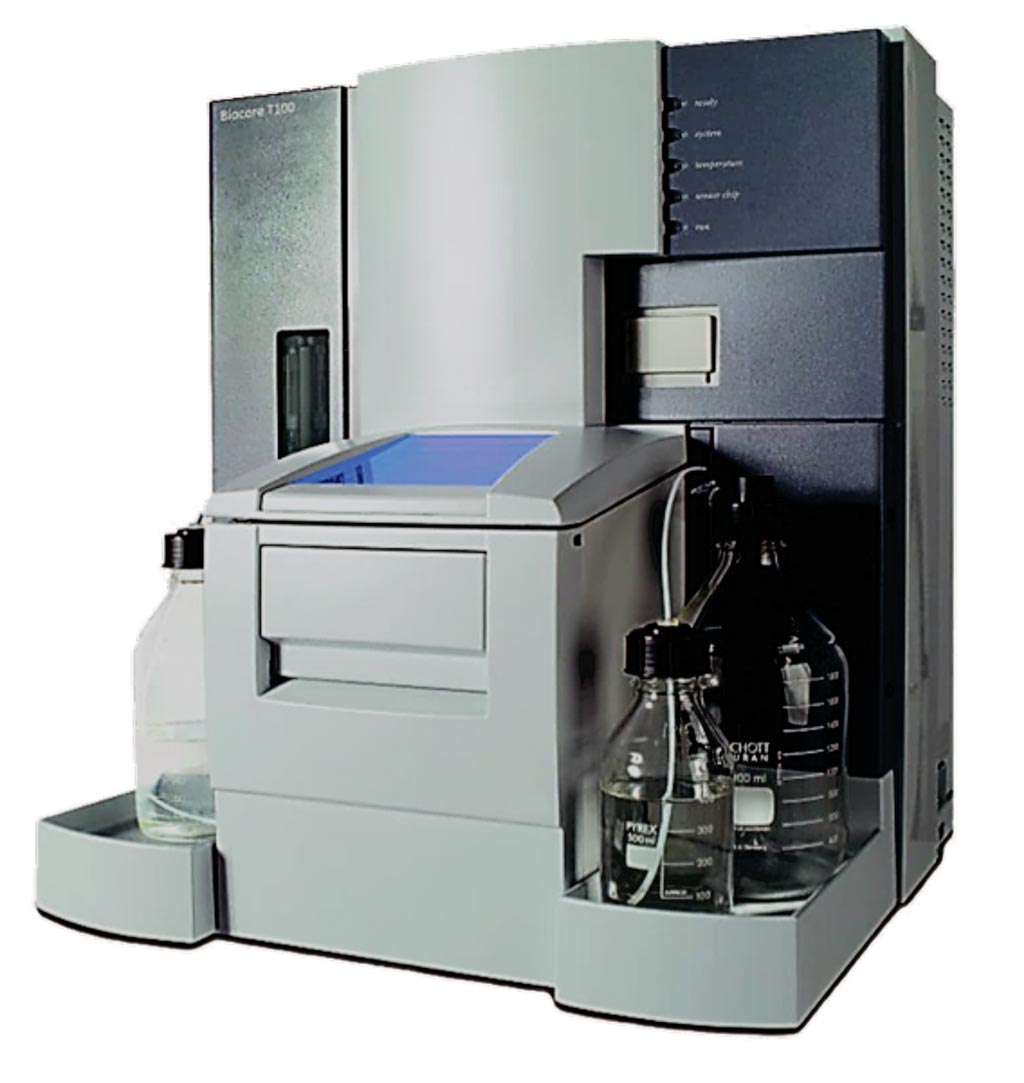Link Discovered Between Strep Infections and Blood Type
By LabMedica International staff writers
Posted on 27 Apr 2017
There are many different types of Streptococcal infection, from mild sore throats to deadly infections of the blood or organs and repeated infections can lead to chronic conditions, such as rheumatic heart disease.Posted on 27 Apr 2017
Streptococcus pyogenes (group A streptococcus [GAS]) is responsible for over 500,000 deaths worldwide each year. The highly virulent M1T1 GAS clone is one of the most frequently isolated serotypes from streptococcal pharyngitis and invasive disease.

Image: The Biacore T200 used for single-cycle kinetic surface plasmon resonance (Photo courtesy of GE Healthcare).
Scientists at the Illawarra Health and Medical Research Institute and their colleagues collected human buccal epithelial (HBE) cells, which were used to assess the role of blood group antigens in GAS attachment to host cells. Blood group status of 38 donors was determined via mass spectrometry of saliva samples from each donor. Unstimulated saliva and HBE cells were collected and prepared.
Streptococcus pyogenes (GAS) isolates were cultured overnight at 37 °C on horse blood agar or in static liquid cultures of Todd-Hewitt broth. Glycan microarray was employed to identify novel GAS-glycan interactions. After processing glycan microarray slides were dried by centrifugation, fluorescence intensity of array spots was measured using the ProScanArray microarray 4-Laser scanner. The interaction of M1 protein, M1 protein fragments and M1 peptides with specific glycan subsets was further investigated via single-cycle kinetic surface plasmon resonance (SPR) on a series S nitrilotriacetic acid (NTA) chip using a Biacore T200.
The scientists found that the association of M1T1 GAS with oral epithelial cells varied significantly as a result of phenotypic differences in blood group antigen expression, with significantly higher adherence to those cells expressing H antigen structures compared to cells expressing A, B, or AB antigen structures. These data suggest a novel mechanism for GAS attachment to host cells and propose a link between host blood group antigen expression and M1T1 GAS colonization. They found that found that people with blood group O could be more prone to infections caused by M1T1 GAS. The O blood group is the most common group among urban populations in western countries, including Australia.
Martina L. Sanderson-Smith, PhD, the senior author of the study said, “Rather than focusing on how Streptococcus spreads like other studies, we took a different approach. We know that some people are more susceptible to Streptococcal infections. We wanted to see if there are other biological reasons that increase the risks, and understand why some people suffer repeated infections.” The study was published on January 24, 2017, in the journal mBIO.













